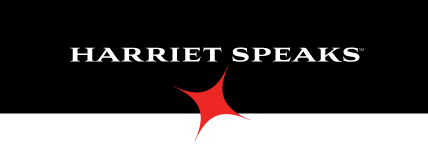For Diversity & Inclusion, Start With Your Hiring Practices
Today Diversity & Inclusion is all the rage. Everyone wants to show that they “get it.” But do they really? Companies and organizations devote ad dollars, headcounts, and budgets to show they are committed to having a workforce that looks like their customer base. But are they really? If I was playing the game show “Jeopardy” I might say, “I’ll take ‘Ways we know companies and organizations are not serious about diversity and inclusion for $1,000, Alec’.” The answer to that question would be, “When companies and organizations remain more focused on WHO they hire instead of HOW they hire.”
Nothing can illustrate this point more than a story. This story would ordinarily be saved for the “You have got to be kidding me” file. This is the file reserved for things that happen that surprise you, but you simply shake your head and move on. But because of the frequency with which this kind of thing takes place and the egregiousness it illustrates, we need to talk about it. This also means it gets upgraded and flagged for the, “Whoa! We are perpetuating systemic inequities while saying we want to be diverse and inclusive – and that’s not OK” file.
An organization I know of has a stated commitment to diversity & inclusion. As a result, they decided that it would be a good idea to hire a person to do diversity stuff. Cue the applause meter. This is good. I say “diversity stuff” because they had not defined what diversity & inclusion actually means for their organization (which is a key first step and almost always overlooked). They just knew “diversity & inclusion” is the new shiny thing that all the cool kids have, and they have to have it, too. But this train quickly went off of the rails when the selection for the positon was made without the organization writing a job description, without conducting a search – none of that “HR-y stuff.” The head guy knew a guy and that is the guy who got the job. Voila! You have a head of diversity & inclusion.
Now, let’s get even more real. The head guy is a white guy and the guy he knew is a white guy. These facts qualify this story for the “You have got to be kidding me” file. Black folks and other people of color know this stuff happens all the time, but we have learned to shake our heads and keep it moving. But, when you add the fact that this was the process (or lack thereof) used to hire a person to lead diversity and inclusion, the “You have got to be kidding me” file just will not do. The irony is too great. This is immediately upgraded to the, “Whoa! We are perpetuating the very problem we say we want to address – and that’s not OK” file.
Because I want you to learn something from reading this (other than the fact that I am funny as well as committed to equity and inclusion), let me share a few facts with you:
Many jobs are filled without the position having ever been posted. Some estimates are 80% of jobs are a part of the “hidden job market”;
Networking remains the key way to secure employment.
OK. Great. We all know this stuff, right? But add that to the fact that 75% white people “report that the network of people with whom they discuss important matters is entirely white, with no minority presence.” (That study is awesome and can be found here). We do not require much more analysis to see how the hidden job market and networking disadvantages non-whites. We can see that HOW the bulk of hiring in companies and organizations occurs means these institutions will remain white and negate whatever they say they believe about diversity and inclusion. Put more plainly, adages like, “It’s not what you know, but who you know” are merely justifications for continuing a system where white folks maintain power.
The first and most important step to truly valuing diversity and inclusion is to rely less on informal processes where people of color are excluded because of the history of your organization or your own relationships. When you look across your company or organization and see little diversity and less inclusion, before you run that ad, before you staff that department, look at HOW you are hiring people. How did current employees find out about their position? How many knew someone in the organization before they were hired? Unless and until you can answer these questions, you may be guilty of perpetuating some of the very inequities you say you are trying to address.
Jyarland Daniels, MBA, JD is CEO & Founder of Harriet Speaks℠, a racial equity and inclusion consultancy that offers training, coaching, and (crisis) communications strategies for non-profits, educational institutions, and corporations. Learn more at harrietspeaks.com.
